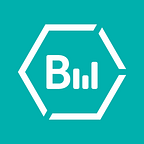How to Optimise Facebook Ads with Targeting
Most people have a love/hate relationship with Facebook. However you feel about Facebook, you have to admit that Facebook Ads are pretty fantastic. There’s so many different options giving you endless ways to create compelling ads using text, images, video, forms and more. The best thing about Facebook Ads though is the targeting capabilities. You’re not simply sending your ad out there into the world (at least we hope you’re not!), you’re putting your message in front of eyeballs that have an extremely high chance of becoming a future customer.
How Are Facebook Ads Structured?
With Facebook Ads targeting is done at the Ad Set level. You have your Campaign, the very top level, which controls the objective (page likes, website visits, website conversions, app installs etc) and beneath this you have your Ad Sets. Targeting at the Ad Set level gives you the freedom to create Campaigns around products or services and create multiple Ad Sets within your campaigns, each targeting different audiences.
Who Should I Target?
While understanding the set up of Facebook Ads is all well and good, the most important factor in using Facebook Ads targeting is knowing how you should be targeting your ads. This is where Google Analytics kicks in.
Note: If you haven’t set up Google Analytics yet, here’s a great article from Google that walks you through the process.
Google Analytics shows you all sorts of information about your website visitors. You can find out where they come from, how they found your site and even what device they used. Hopefully you’re already using goals in Google Analytics to track website conversions like sales, newsletter sign ups and form completions. If not, put it at the very top of your to do list!
In Google Analytics, find the common attributes of your converting website visitors and use those to optimise your Facebook Ads. Some of the most common things to look at are:
Location — what country or city convert highest for you?
Gender — do men or women convert higher?
Age — are there any particular age groups that have higher conversion rates?
Landing Page — are any particular pages on your website better at converting than others?
Once you’ve found a group that converts higher, you can use those demographics when defining who your Ad Sets will target. For example, if you find in Google Analytics that people from Brazil and the United Kingdom convert higher than any other countries, create an Ad Set that targets people from Brazil or the UK. Same goes with age. If 18–35 year olds convert higher than other age groups, create ad sets that target those age groups.
Why Refining An Audience Works
You can even go one step further by combining those demographics. Create one Ad Set that targets 18–35 years olds in Brazil and another Ad Set that targets 18–35 year olds in the UK. By refining the targeting you’ll be able to create ad text that is more relevant and resonates better with your audience.
For example, let’s look at a florist preparing for Valentine’s Day. They could create an ad showing off their beautiful bouquets and leave it up to Facebook to decide who sees the ad. Or, they could use targeting to create an audience of males who live within 15 miles of their location and whose relationship status is engaged. The florist could then create a specific message for this audience reminding them to pick up flowers for their fiancé. I’m sure you can guess which ad would be more effective! Generally speaking, the more targeted your ads are the better results you’ll get.
You can get super detailed with targeting, but keep in mind the more defined your audience is, the smaller it becomes.
Increasing Conversion Rates By Targeting Website Visitors
Another popular audience to target is website visitors. People who know you, who have already visited your site, are much more likely to convert than a total stranger. With the Facebook Pixel you add a small snippet of code to your website which lets Facebook know when someone has visited your site. Facebook then matches those website visitors with existing Facebook users and voila, you now have a group of your website visitors that you can show your ads too.
If that sounds impressively clever, wait, there’s more! With the Facebook Pixel, Facebook can even tell what pages people have viewed and will let you create ads around that information. For example, imagine you’re a fashion retailer and have a new line of women’s t-shirts coming out. You can create an Ad Set that targets women who have viewed other t-shirts on your website in the last 30 days. Showing ads to people who are more likely to be interested in your products can increase your conversion rates and ultimately your ROI.
For those who read this post on our website, we’d be silly if we didn’t target them with an ad for our Facebook Ads services! ;)
Always. Be. Testing.
‘Always be testing’ is a popular phrase amongst Facebook Advertisers and it’s wise advice. Don’t simply set the targeting up for your Facebook Ads and then leave them alone… Always. Be. Testing. Check in with Google Analytics regularly to see if the high converting demographics have changed. Test out new audiences, like targeting competitor’s Facebook pages, to see if they work for you. Optimisation is about getting the best results from your ads. Monitor your ads regularly and you’ll see a stronger performance and a more profitable ROI.
Got a question about targeting or Facebook Ads in general? Leave a comment or get in touch, we’d love to chat with you!
Originally published at www.beesonmedia.com on July 12, 2016.
